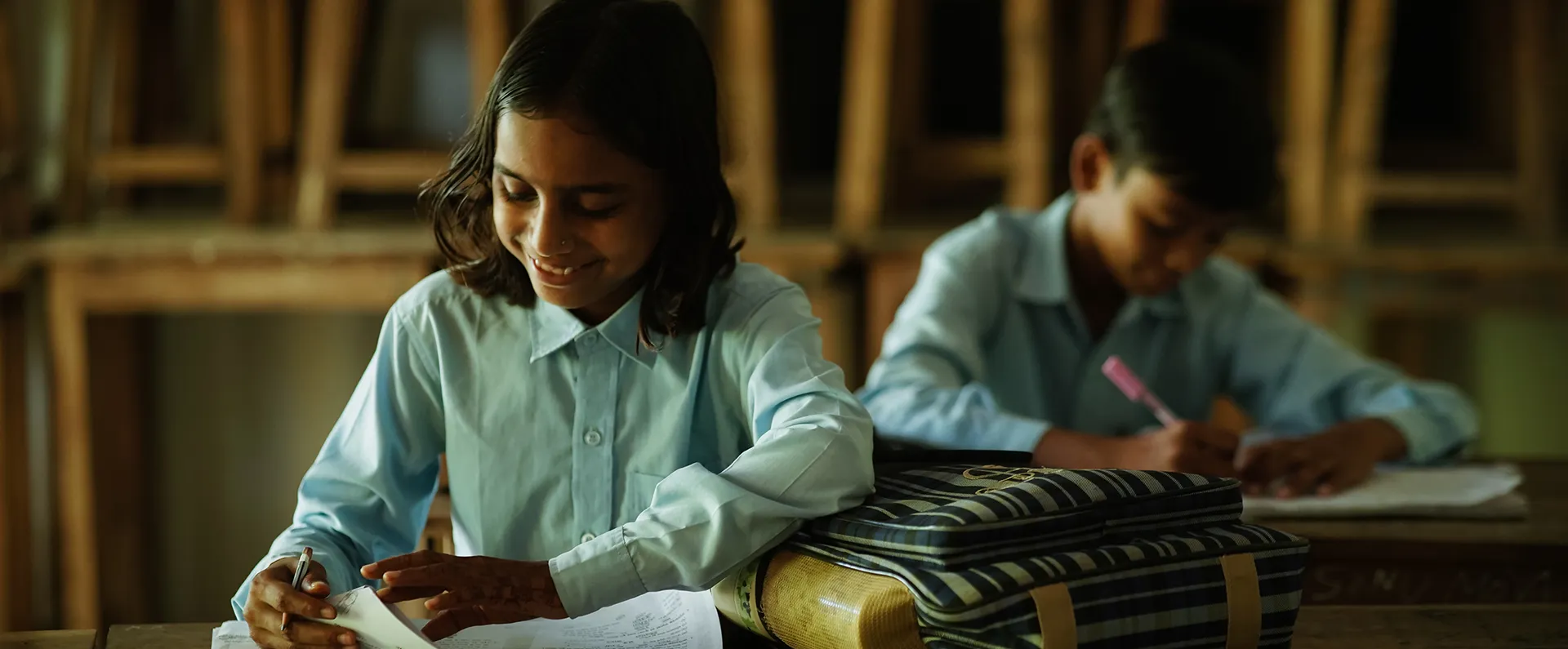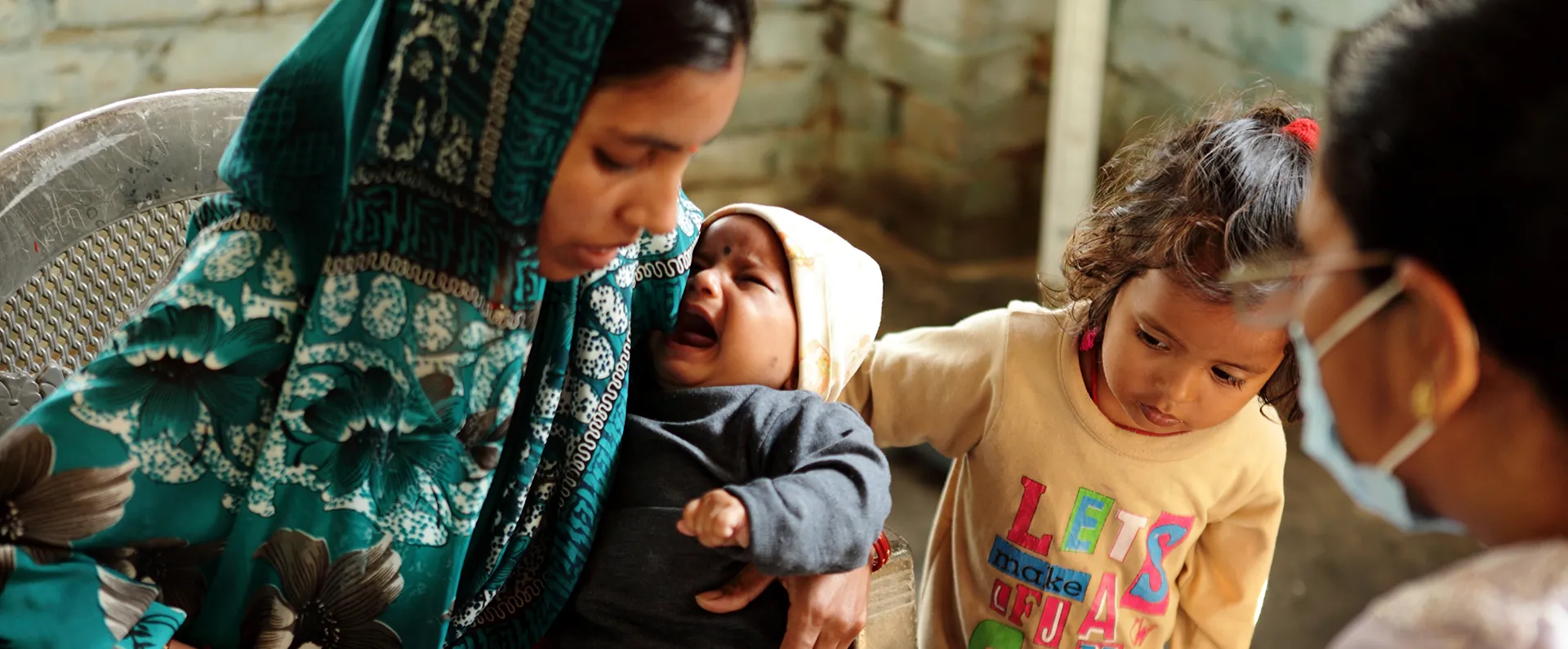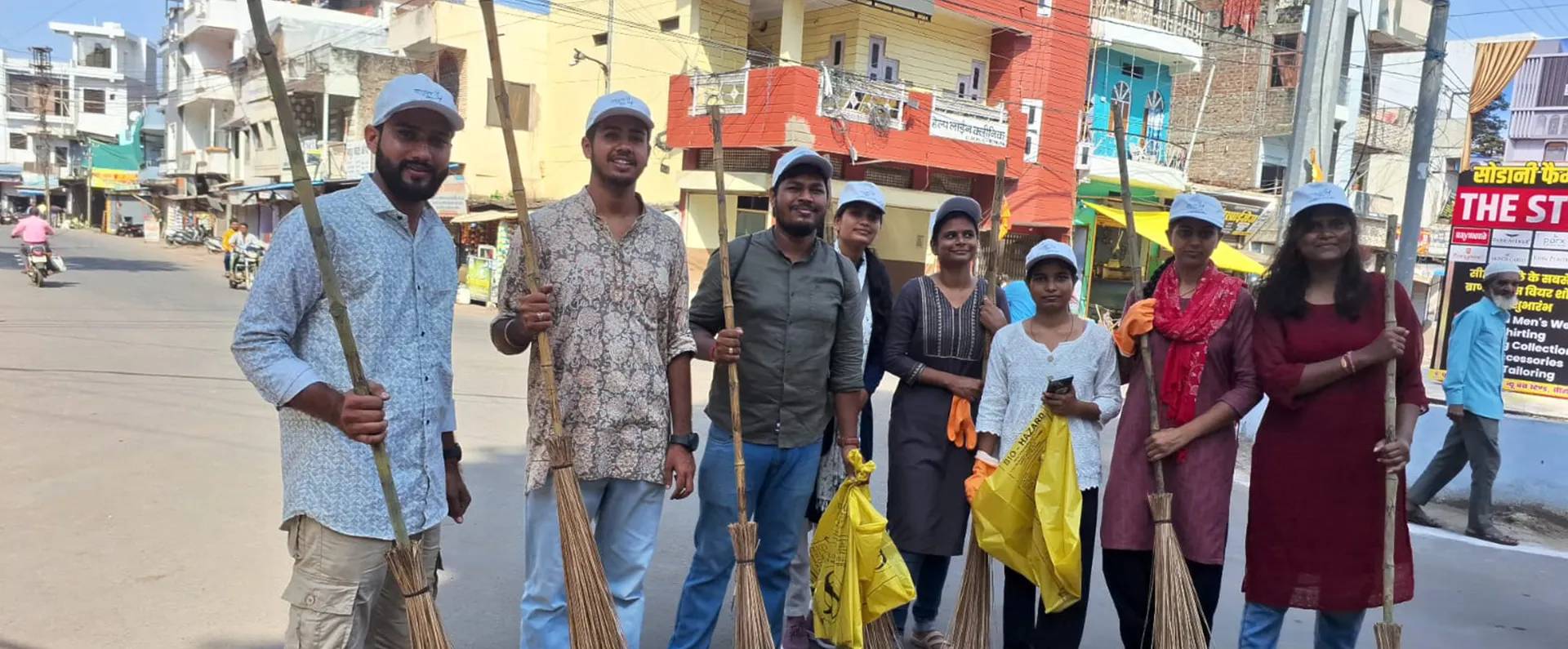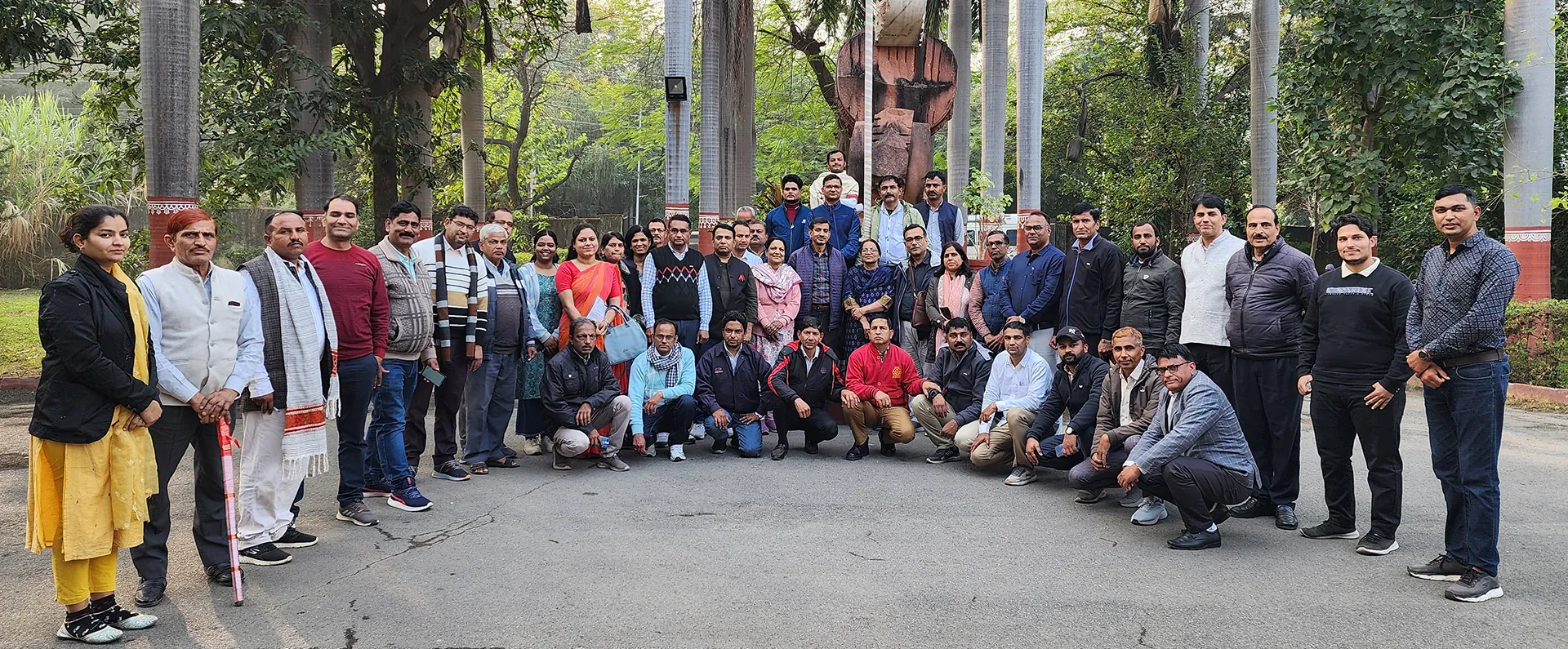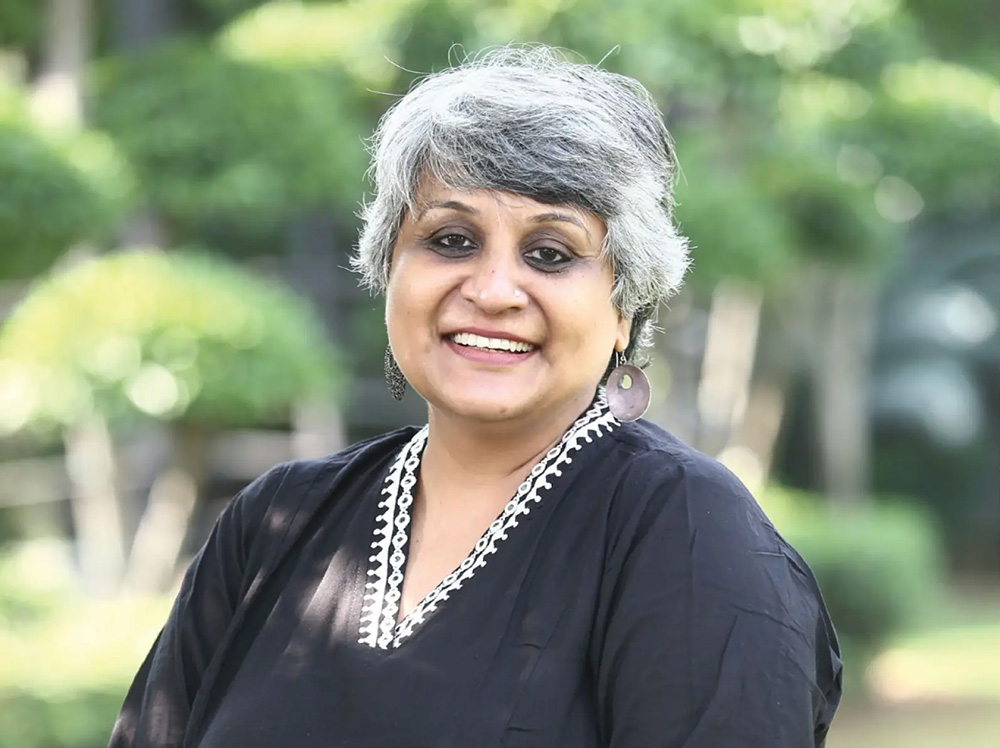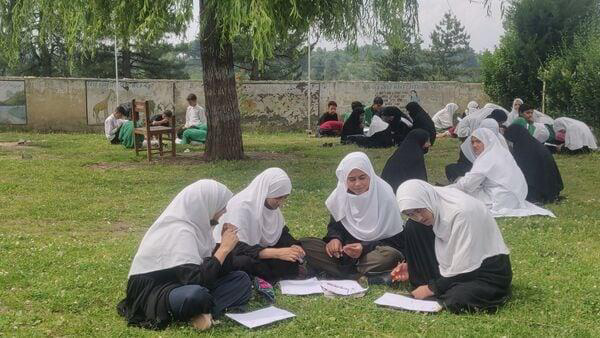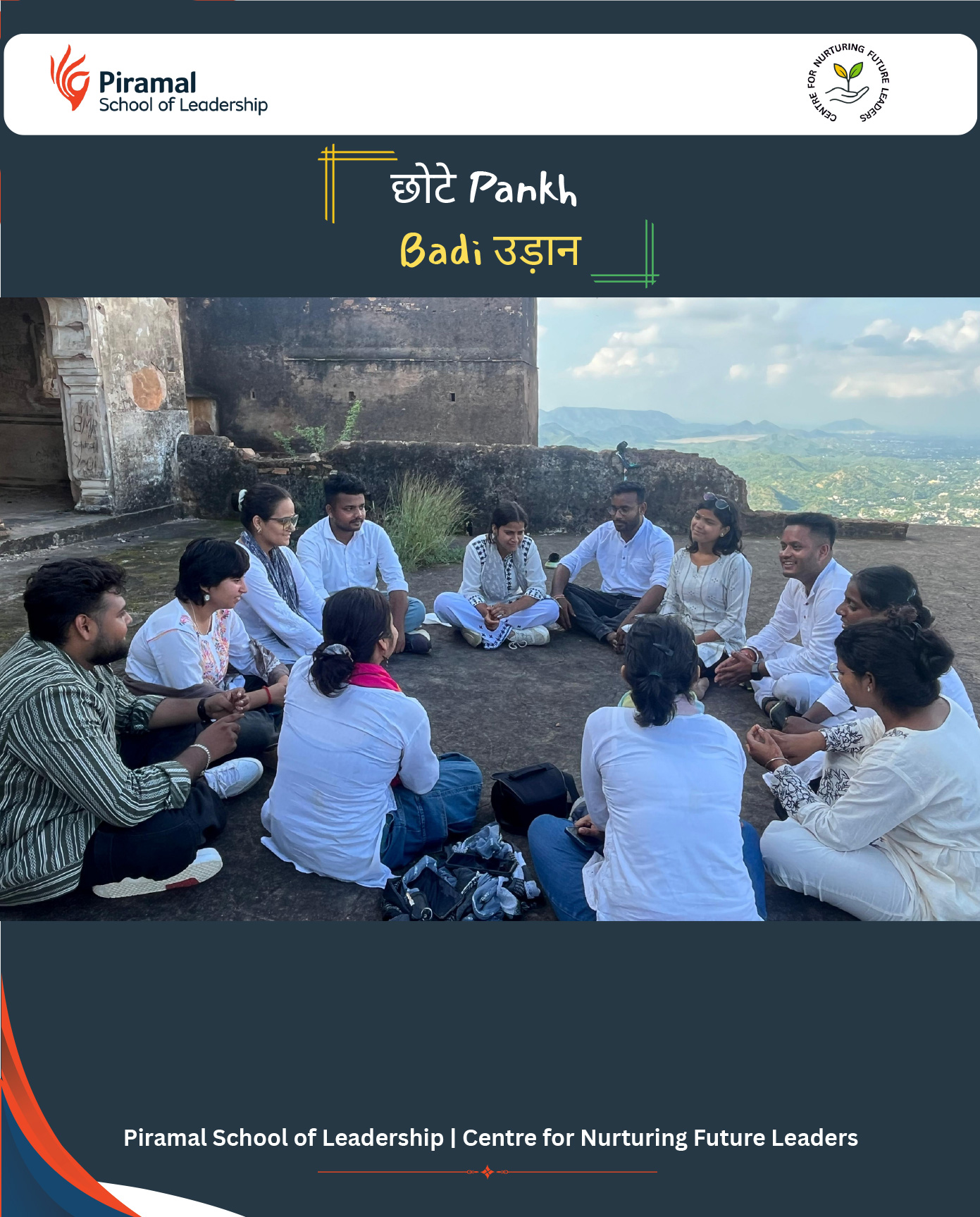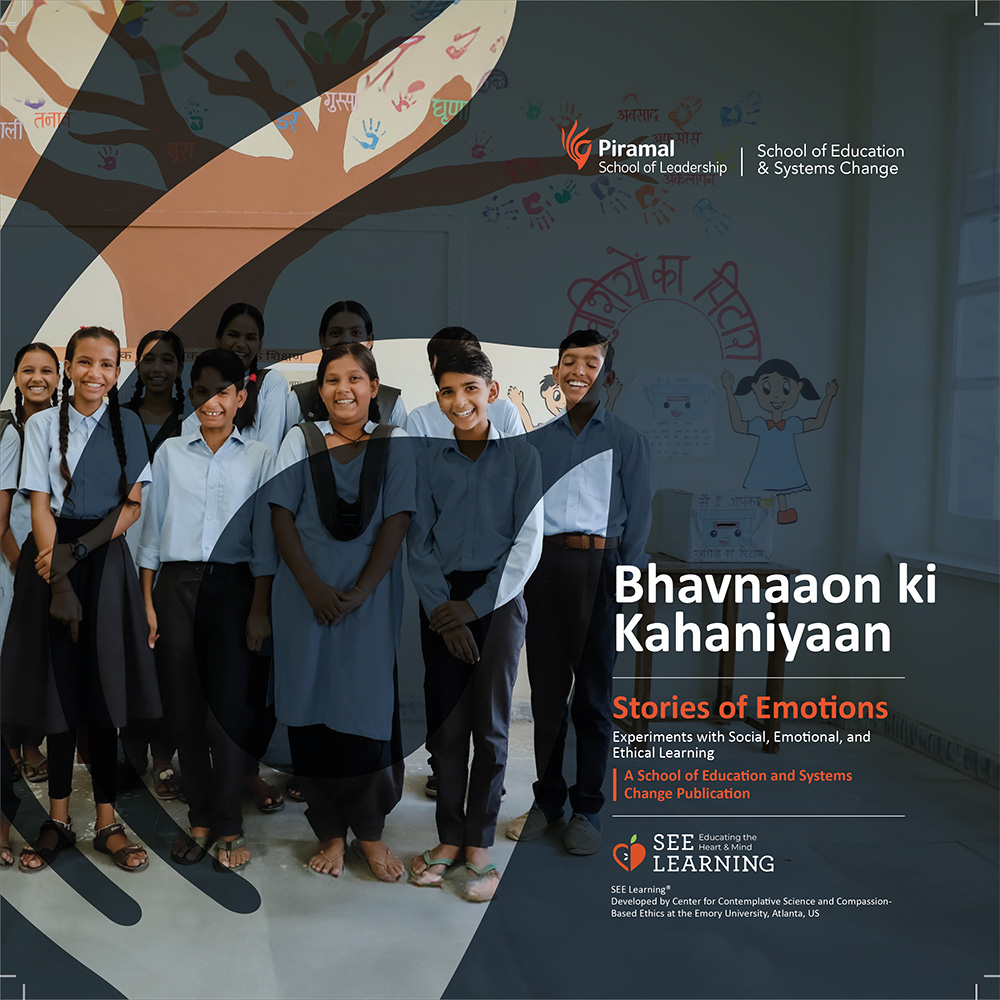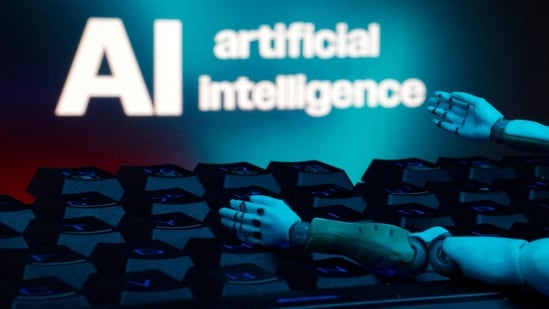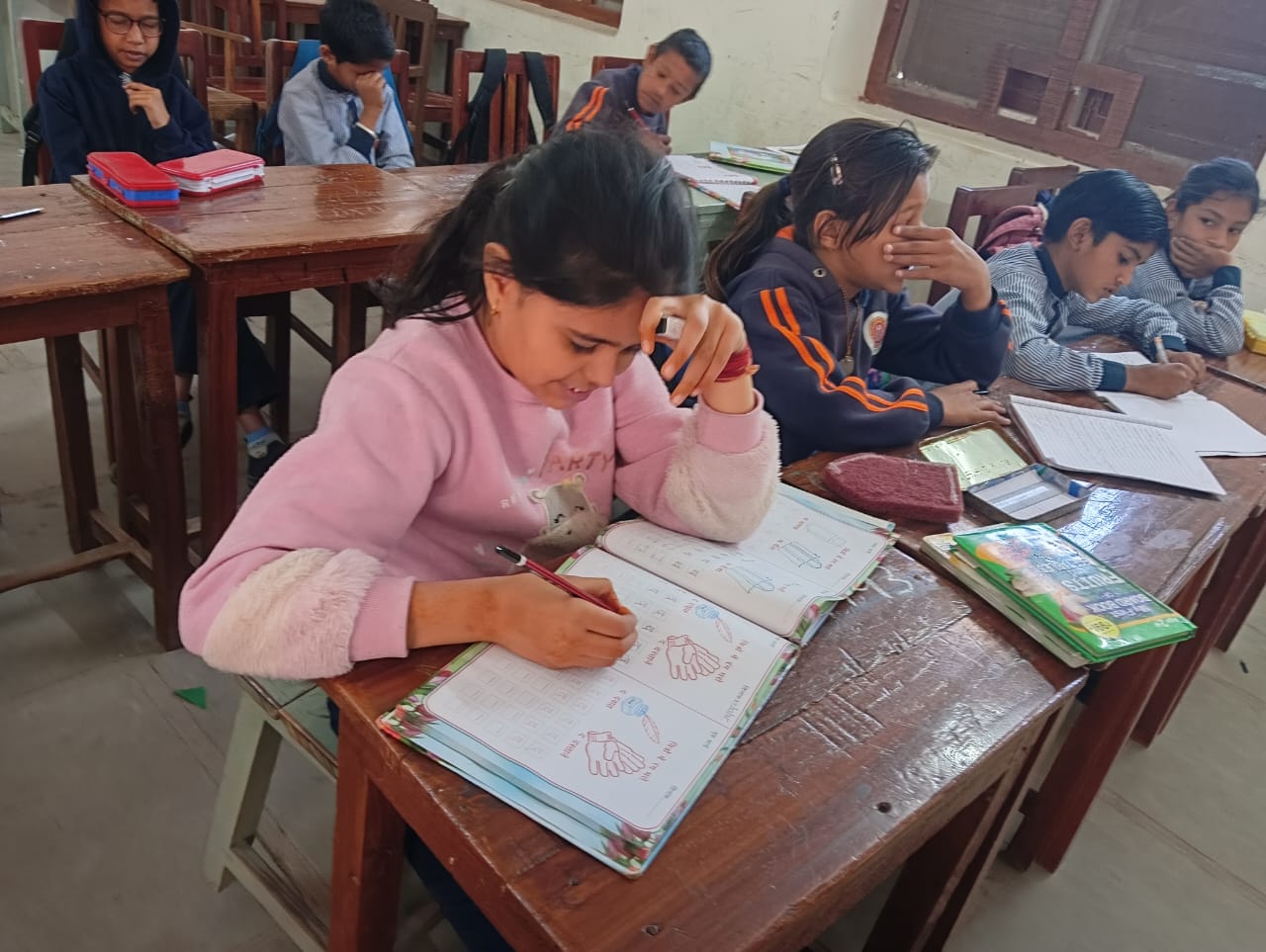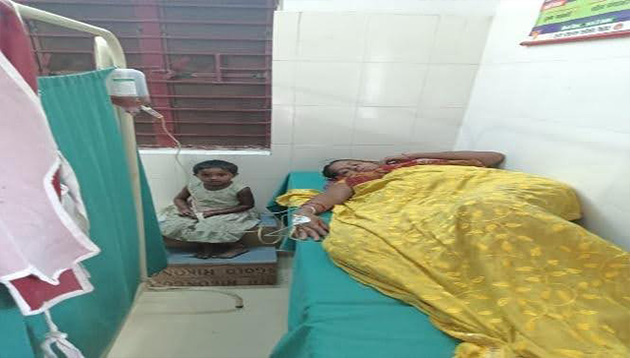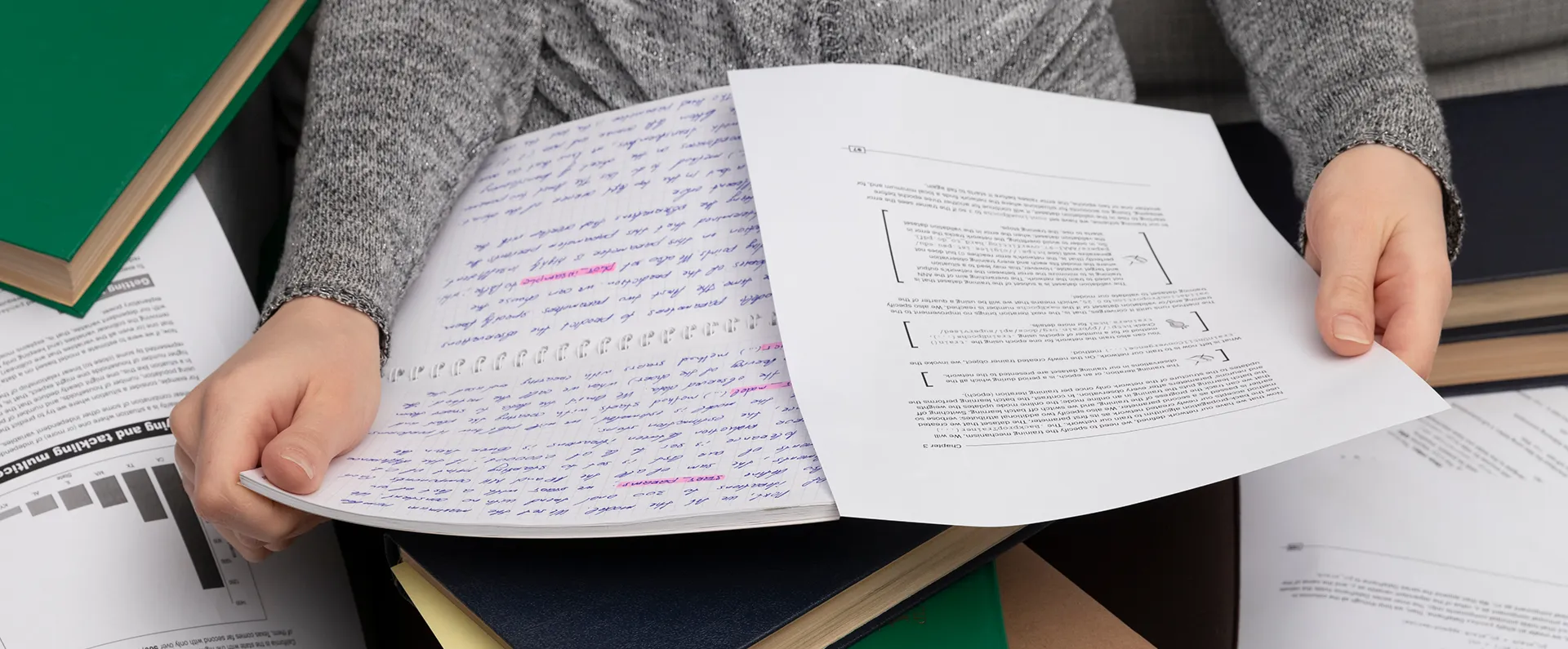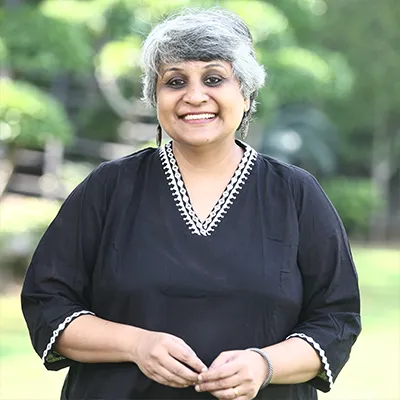Abstract
This study addresses the question: How community-issues-based project-based learning [CI-PBL] could be integrated into middle years school programs [N= 300 teachers; N = 6000 children], especially those catering to children from high poverty and socially marginalized communities. Additionally, the study draws evidence for how CI -PBL fosters communication, critical thinking, citizenship, & problem-solving skills in children.
Findings from this study conducted in public schools of Jhunjhunu [an Indian district] show that PBL pedagogy contextualized to children's immediate context & school realities ensures adoption. Further, the pre-post self-report exercise indicates that CI-PBL classrooms enhance children's communication (68%), critical thinking (55%), citizenship (64%), and problem-solving skills (60%). In the end, community campaigns around CI-PBL facilitate its adoption amongst teachers & children.
Keywords: Future-ready skills, Project-based learning, Scalable interventions, High-poverty communities
1. Introduction
"The world economy no longer pays for what people know, but for what they can do with what they know" - Andreas Schleicher (Director for Education and Skills, OECD)
This third millennium has been described by educators, policy-makers, sociologists, economists, and futurists as the Creative Age (Florida, 2002), the Digital Age (Thomas & Brown, 2011), and the Conceptual Age (Pink, 2005). Policy think tanks & national policies across the world advocate the revamp of school education programs to ensure they focus on fostering competencies our future citizenry would for full participation in digital or automation-age societies and workplaces (Future of Education & Future Jobs Report 2020).
Thus, education needs to focus more on building competencies that our future citizenry would need 20 or 30 years from now to become constructive contributors to global challenges, local issues, workplaces, & growing enterprises. In other words, school education needs to focus on fostering competencies essential for full participation in future societies & workplaces.
Correspondingly, many governments worldwide have redesigned their national education policies & curricular frameworks to redirect school reform strategies towards 21st-century interdisciplinary knowledge, skills, & dispositions (Shaheen, 2010; The Future of Education and Skills Education 2030 (OECD 2018)).
The recently announced India's National Education Policy (2020) also mandates schools to adopt transformative pedagogies that foster interdisciplinary knowledge, 21st-century skills as well as self-led learning & continuous learning dispositions. It emphasizes that classroom practice needs to move away from rote learning & teacher-centered instruction. At the policy level, this new policy (NEP 2020) has infused new energy & determination amongst policymakers, think tanks, & systemic officials to redefine Indian govt schools for the 21st-century societal context. However, there is a dearth of 'systemic experiments' or 'proof of concepts' that demonstrate how school & classroom reforms can be realized at scale. Thus, one key question that remains unaddressed is how transformative & experiential pedagogies such as project-based learning could be integrated into government-run schools to ensure children engagement in 21st-century skills focused learning experiences. To put it precisely: How can project-based learning [PBL] experiences be curated to ensure deeper children engagement & adoption of PBL pedagogy at scale in public schools of India & across the world?
2. Research Objective/ Purpose of the study
Indian public education system constitutes a dense network of 1-lakh+ schools that cater to the basic education needs of 115+ million children [National Achievement Survey 2020 report]. This action research study seeks to answer the following questions pertaining to the public schools in India, which mostly cater to children from suburban, rural, socially marginalized, & high-poverty communities. The study aims to ascertain:
- How community-issues-focused project-based learning curricula could be curated & integrated into middle years programs to foster critical thinking, active citizenship, & problem-solving skills in children?
- How campaigns can be curated to ensure integration of CI-PBLs in larger number of schools?
3. Theoretical Framework
Dewey (1902), Kilpatrick (1918), & Kliebard (1986) theorized that learning is an experiential & active process of knowledge construction that involves purposeful engagement with authentic contexts & themes that tap into children's curiosity and interest. One such teaching-learning approach widely known as project-based learning (PBL) inherently requires children to engage with meaningful and authentic & complex problems or questions & construct new knowledge or solutions through intense collaboration & engagement with peers, mentors, & community.
Project-based Learning modules are designed using five key design principles:
- Aligned to curriculum, core concepts & skills
- Anchored around authentic questions or problems
- involve knowledge construction or acquisition
- Involve Student Driven Actions
- Generate products or solutions through collaboration with peers & engagement with immediate ecosystem (Halvorsen et al; 2012; Thomas, 2000).
Research has demonstrated that project-based learning classrooms anchored around authentic community problems or questions have enhanced the engagement of children, especially those from high-poverty communities, and thus have effectively helped narrow their achievement gaps in subjects such as content literacy & social studies (Halvorsen, Duke, Brugar, Block, Strachan, & Berka, 2012). In this study, we aim to investigate how community-issues-based project-based learning [CI-PBL] modules could be designed to address authentic community issues to inculcate critical thinking, active citizenship, and problem-solving skills in the heavily under-resourced government schools in Jhunjhunu district in India. We also devise a teacher development model that can enable middle school teachers to adopt PBL pedagogy in their classrooms and thus achieve classroom transformation impact at scale.
4. Method
4A. Design
Design experiment approach was used to develop two CI-PBL modules. We set a goal of designing PBL modules that closely relate to the issues impacting the life quality of children and adults in & around the school. We also accounted for the heavily under-resourced realities in which Indian public schools' function. The iterative process involved conversations with children, teachers, parents, & district authorities to understand their priorities, interests, and challenges that could be addressed through CI-PBLs. Informed by the literature on designing authentic questions & PBL experiences for children from high-poverty communities, we developed the following two modules:
- "Water shortage & effective management"
- "Zero plastic waste schools"
Each project was developed for 5-6 weeks, with each in-classroom weekly engagement lasting up to 120 minutes.
CI-PBL Module 1: Water shortage and effective management was the overarching theme of this six-week citizenship challenge facilitated using the project-based learning principles. As a first step, children were required to explore water-related issues by interviewing teachers, peers, parents, & other members of the communities. Based on these interactions, they created posters to depict their understanding of the challenge. In the next step, they investigated the problem further by going deeper into the water-related issues reported in newspapers, community gatherings, leaders, and civic helpers within the communities. Thereafter, children themselves stepped into the shoes of news reporters and made news pieces, posters, and newsletters in local languages to spread awareness around the challenge: of water shortage & effective reuse. Thereafter, children were required to survey the school & community to explore feasibly water management solutions such as: using the kitchen wastewater in fields and gardens, using the bath water for cleaning & mopping; servicing and repair of leaks in water taps, water pipes, water storing containers, etc. They were also required to inspect the school and neighborhoods to determine if the solutions they had found would be relevant in these contexts. In the end, students summarized their understanding of the water-related issues, underlying causes, solution measures, etc. in the form of collages, posters, or street plays and shared their learning with family, friends, & community.
CI-PBL Module 2: Zero Waste Schools was another citizenship challenge where we engaged children in exploring waste-management-related challenges & their contextual solutions. In the first step, students explored the type of waste & spots where waste was disposed of or collected in their schools & neighborhoods, In the next step, children were required to interact with adults in their neighborhoods or communities to explore the adverse impacts related to inappropriate waste disposal. In the next step, children engaged in focused group discussions to dive into the inappropriate waste disposal practices, impacts of inappropriate waste disposal on communities, ways to segregate waste, & ways to address excessive plastic waste menace & inappropriate plastic waste management practices. In the next step student discussed strategies to segregate waste into biodegradable, non-biodegradable plastic waste, & recyclable paper & tin waste generated in their school & community. And finally, children engaged with communities to spread awareness of waste segregation & principles of plastic waste "reduce – reuse – recycle".
4B. Participants
100 government-run schools [N = 300 classrooms; N= 300 teachers; N = 6400 students] participated in this action research study. In addition, 15 team members from the authors' team along with 365 community volunteers [Parents & Local Youth group] campaigned in the district to sensitize the headmaster, teachers, parents, children & local leaders on these two CI-PBLs. This ensured the enthusiastic participation of the entire community. Finally, a pre-post self-report evaluation was implemented at the beginning & end of the two CI-PBL modules.
4C. Data sources & Evidence
Data gathered for the study included: A) Students pre-post self-reports on 21st-century skills such as critical thinking, active citizenship, & problem-solving B) Student work & teacher insights during the two CI-PBL modules implementation chapters
6. Results and Conclusions
Results of this study are reported below in two sections: 6A) Trends observed in the pre-post self-report exercise [communication, critical thinking, citizenship, & problem-solving skills]; 6B) Teacher insights on CI-PBLs design & implementation
6A. Trends observed in the pre-post self-report exercise:
Due to stringent covid protocols & limited availability of time and human resources, we were able to conduct the self-report pre-post exercise with a limited number of children. 1057 children participated in pre-evaluation exercise, 457 in the post-exercise, and 335 students competed both pre & post self-report. 32% of the students showed skills increase of greater than 20% from Pre to Post Engagement. All 3 skills that have shown an increase in terms of student ability from pre- to post-assessment:
- Communication (68%)
- Critical Thinking (55%)
- Citizenship (64%)
- Problem Solving (60%)
6B.) Teacher insights on CI-PBL design & implementation:
Insights from Teachers on CI-PBL Module 1 – Water shortage and effective management: Teacher 1 from GSSS Madri School shared her insights. She mentioned that this module was a new way of learning for children. It required children to move around the school & neighborhood with a keen eye & understand water shortage challenges. Children then interacted with the community to explore water reuse, water waste minimization, and rain-water harvesting strategies that would lead to effective water management. In this entire process, children learned to communicate creatively, know about water shortage & wastage-related issues, & sensitized the community toward responsible water utilization approaches. The teacher also pointed out how the module put children outside their comfort zone & we encouraged them to interview, present, curate street plays, & explore solutions as part of the citizenship campaign that we participated in.
Teacher 2 from GSSS Bibasar school pointed out that zero waste school citizenship campaign provided children with opportunities to think like an investigating scientist and solve the problem. Most incredible was to see children following a step-by-step process to arrive at a feasible solution to authentic problem. Not only was this a new experience for children but also for teachers alike, as we experienced the effectiveness of this experiential teaching-learning approach.
6. Significance of the Study
The presented study is a first of its kind attempt to demonstrate how constructive, transformative, & experiential pedagogies like project-based learning could be customized for heavily under-resourced schools, especially those catering to basic education needs of high-poverty & socially marginalized communities. Moreover, the study is again a unique attempt at describing how design experiments that take into account children' immediate context, curricular learning needs, teacher & school resources can make innovative pedagogies such as project-based learning accessible for teachers, who are yet not fully trained in the craft.
Furthermore, the action research is an attempt to showcase how the adoption of project-based learning could be realized at scale across schools in given geography through focused campaigns, active involvement of the community in addition to schools, & finally by giving voice to the authentic challenges the communities are grappling with. Halverson et al (2012) have shown that authentic context-embedded project-based learning experiences successfully engage children from high-poverty and socially marginalized communities, who otherwise find rote and traditional methods of learning abstract concepts very disengaging.
In a nutshell, this study is an attempt to showcase how the adoption of innovative pedagogies could be scaled up in the spirit of content local & skills global by customizing PBL modules, designing community campaigns, and directing children's attention to solving pertinent challenges and problems from their immediate context.
8. References
Barron, B. J., Schwartz, D. L., Vye, N. J., Moore, A., Petrosino, A., Zech, L., & Bransford, J. D. (1998). Doing with understanding: Lessons from research on problem-and project-based learning. Journal of the learning sciences, 7(3-4), 271-311.
Beineke, J. A. (1998). And there were giants in the land: The life of William Heard Kilpatrick (Vol. 5). Peter Lang Pub Incorporated.
Devkota, S. P., Giri, D. R., & Bagale, S. (2017). Developing 21st century skills through project-based learning in EFL context: challenges and opportunities. The Online Journal of New Horizons in Education-January, 7(1).
Dewey, J. (1902). The child and the curriculum. Chicago: University of Chicago Press
Florida, R. (2002). The rise of the creative class. NY: Basic Books.
Freeman, C. (2004). Income inequality in changing techno-economic paradigms. In S. Reinert (Ed.), Globalization, economic development and inequality (pp. 243–257). Cheltenham, UK: Edward Elgar.
Generating Meaning, Pride, Joy and Learning in School Heads through Leadership Training, Manmohan Singh, Kaivalya Education Foundation
Gomez, A., & Albrecht, B. (2014, December/January). True STEM education. Technology and Engineering Teacher, 73(4), 8-16.
Hanna, D., Istance, D., & Francisco, B. (Eds.). (2010). The nature of learning: Using research to inspire practice. Paris: OECD Publishing
Halvorsen, A. L., Duke, N. K., Brugar, K. A., Block, M. K., Strachan, S. L., Berka, M. B., & Brown, J. M. (2012). Narrowing the achievement gap in second-grade social studies and content area literacy: The promise of a project-based approach. Theory & Research in Social Education, 40(3), 198-229.
Halvorsen, Santiago, Castro, & Whitford (2018) - Historical context to teach injustice in the elementary grades Eliana Castro Social Studies Journal
Iwamoto, D. H., Hargis, J., & Vuong, K. (2016). The effect of project-based learning on student performance: An action research study. International Journal for the Scholarship of Technology Enhanced Learning, 1(1), 24-42.
Johnson, A. A. (2016). The effect of project-based learning on the academic achievement of at-risk advanced placement students.
Kilpatrick, W.H. (1918). The project method: The use of purposeful acts in the educative process. Teachers College Record, 19, 319-334.
Kliebard, H. M. (1986). The struggle for the American curriculum, 1893-1958. Boston: Routledge & Kegan Paul.
Klingler-Vidra, R., Glennie, A., & Lawrence, C. S. (2022). Inclusive Innovation. Taylor & Francis.
Krajcik, J., Blumenfeld, P. C., Marx, R. W., Bass, K. M., Fredricks, J., & Soloway, E. (1998). Inquiry in project-based science classrooms: Initial attempts by middle school students. Journal of the Learning Sciences, 7(3-4), 313-350.
New Education Policy, 2020 , Ministry of Human Resource and Development, Government of India
National Achievement Survey Report 2020
Perez, C. (2004). Technological revolutions, paradigm shifts and socio-institutional change. In S. Reinert (Ed.), Globalization, economic development and inequality (pp. 217–242). Cheltenham, UK: Edward Elgar
Pink, D. H. (2005). A whole new mind: Why right-brainers will rule the future. NY: Penguin Group
Reimers, F. M., & Chung, C. K. (Eds.). (2019). Teaching and learning for the twenty-first century: Educational goals, policies, and curricula from six nations. Harvard Education Press.
Satish, A., Shankar, S. B., & Kavitha, K. N. (2021, August). Naagarik: A Machine Learning Framework for Intelligent Analysis of Civic Issues. In 2021 Asian Conference on Innovation in Technology (ASIANCON) (pp. 1-6). IEEE.
Shaheen, R. (2010). Creativity and education. Online Submission, 1(3), 166–169.
Thomas, D., & Brown, J. S. (2011). A new culture of learning: Cultivating the imagination for a world of constant change, Vol. 219. Lexington, KY: CreateSpace.
Whitney, D. D., & Trosten-Bloom, A. (2010). The power of appreciative inquiry: A practical guide to positive change. Berrett-Koehler Publishers.
Appendix A: Project Zero plastic waste school poster
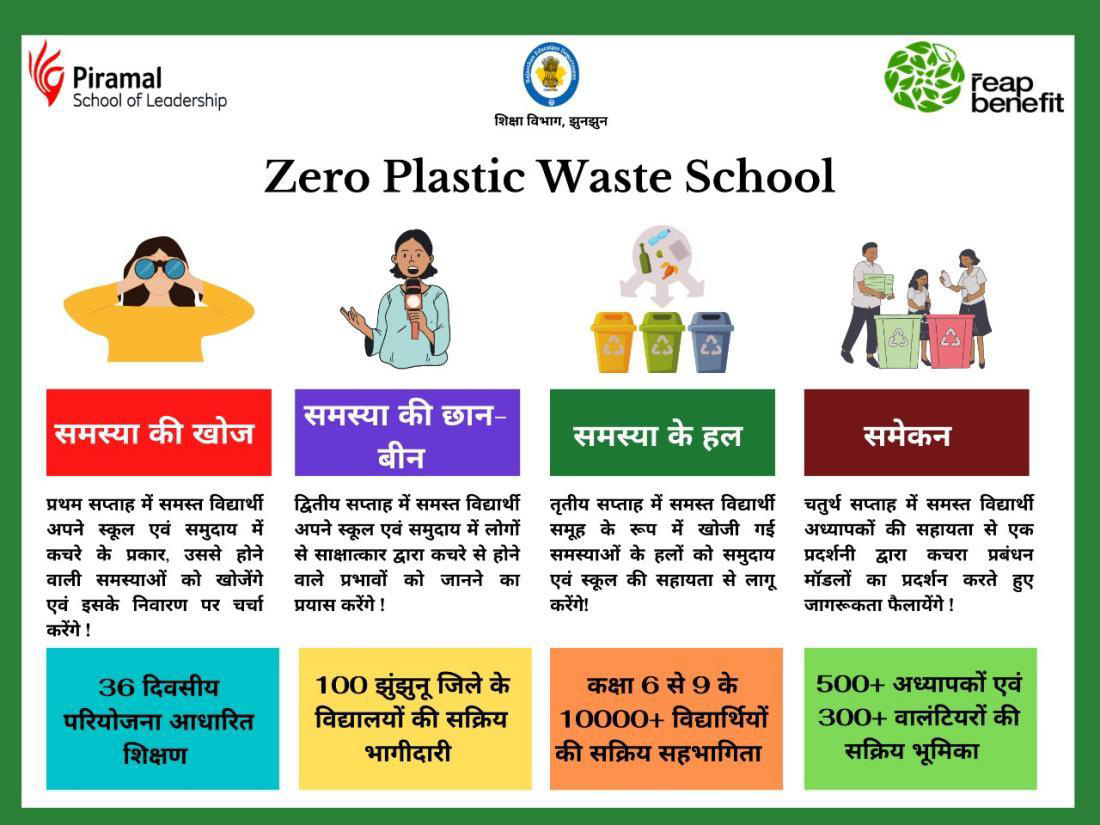
Appendix B: Pre-post Student Assessment Data
| Students Data | Count |
| No. of entries in Pre Skill-Rubric Assessment | 1057 |
| No. of entries in Post Skill Rubric Assessment | 457 |
| No. of students for whom we have both Pre & Post Skill Rubric Assessment | 335 |
Appendix C: Sample Case studies

Figure :10.2 Students case study of Zero plastic waste school

